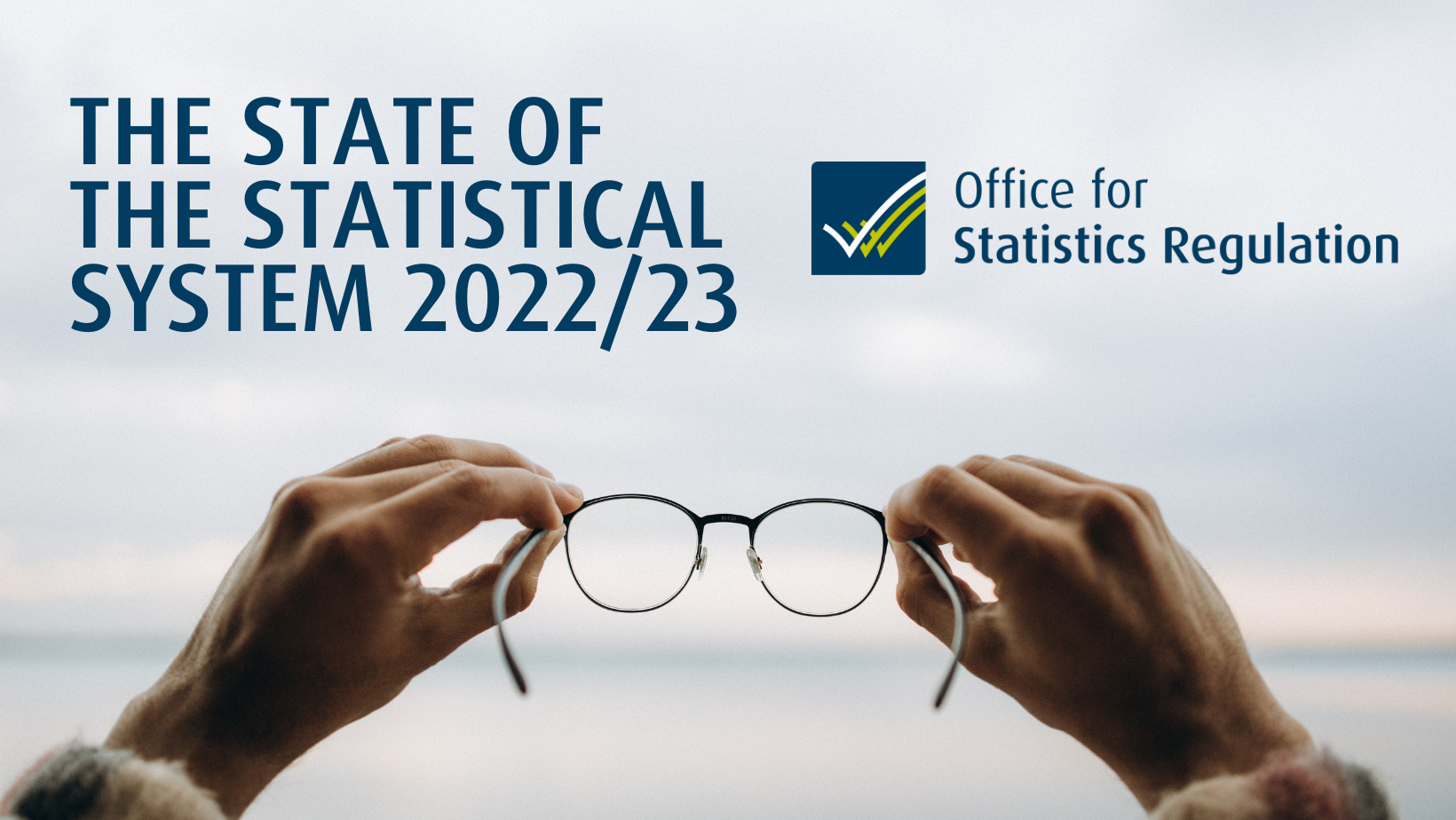Executive Summary
This report, the fourth in our annual series, draws together the findings from our regulatory work in financial year 2022/23 to provide our view on the state of the UK’s statistical system. We explore our findings under four overarching themes and set out what we want to see from the statistical system going forward, and what are we doing to support this.
The statistical system is continuing to innovate and respond to emerging issues; however, this pace is difficult to maintain given the current pressures on resources and funding
- The statistics and data landscape is becoming increasingly complex, with greater amounts of data being made available by government departments.
- There continues to be a significant shift in government and public demand for statistics and data from COVID-19 to other key issues. The statistical system has demonstrated its responsiveness to meet these data needs. We are seeing good examples of innovation and collaboration across the system, but this is not consistent.
- Against a backdrop of financial, resourcing and capability pressures, the statistical system is facing continued challenges to keep pace with the demand for statistics and data. We caution that this pace is likely not sustainable with current resources and funding, especially if additional priorities emerge.
- Increased collaboration across the UK statistical system can make the most efficient use of data and people in a joined-up way and share learning across the system on improving efficiency.
- The increasing availability of data and the growing use of artificial intelligence should be seen as an opportunity for the statistical system.
- A successful statistical system depends on having a workforce that is sufficiently resourced and skilled.
- The role of a statistician is evolving and needs to keep pace with the increasing use of data science techniques. Statistics producers need to keep pace with these skill changes.
Developments should not come at a cost to the quality of statistics and data
- With the use of new and innovative data sources in the production of official statistics, producers need to manage risks around quality.
- Statistics producers are facing increasing challenges when using data collected from social surveys. Declining response rates are a concern across the statistical system.
- Transformation programmes are underway to improve statistical quality. It is important that any risks during transition to new methods are well understood and mitigated against.
- The user demand for statistics that are comparable across the UK has continued. With policy measures and targets differing across the UK nations, it is inherently challenging for data and statistics to be directly comparable.
- The Office for National Statistics (ONS) is a key body in the statistical system for delivering initiatives across the UK. It is important that, in this leadership role, ONS ensures it consistently engages with the devolved administrations and any other relevant government departments. This is particularly important where the ONS is leading on transforming statistics on topic areas which have a UK wide importance.
Statistics producers must prioritise user engagement to allow them to identify areas of high importance and understand the impact of changes
- We are seeing good examples of user engagement across the statistical system, but this is not consistent and engagement with a wider breadth of users of statistics is still too limited.
- Producers should be more transparent about how users can make direct contact, and find out about any planned developments or changes.
- Engagement with users can help producers to better understand the value of their statistics and whether they can reduce or stop production to help them meet new and emerging needs. This is increasingly important given the current pressures on funding and resourcing.
- Statistics producers should ensure that their statistics serve the public good, by having a clear understanding of the drivers behind priorities – ensuring they are balancing the needs of government with those of wider users, especially when these are not fully aligned.
Statistics should be made available and communicated effectively to support understanding and appropriate use
- The statistical system is demonstrating a greater understanding of the need for intelligent transparency, namely the importance of taking an open, clear and accessible approach to the release and use of data, statistics and wider analysis.
- More work needs to be done to raise awareness of these principles beyond the statistical profession – everyone working in government and in public bodies has a role in ensuring that the principles of intelligent transparency are fully embedded.
- Producers should continue to explore the most effective ways to communicate statistics to support understanding and appropriate use.
- There is a growing need for producers to communicate statistics beyond the traditional statistical bulletin. Government departments and producers are increasingly engaging with users via other methods such as podcasts, blogs and social media.
- It can be difficult for statisticians to influence how statistics are used once they have been published, with social media a factor in some cases. Statisticians should rise to this challenge by engaging widely with people who use statistics, including media outlets, ensuring users have a clear understanding of the statistics, to minimise the risk of potential misuse.

